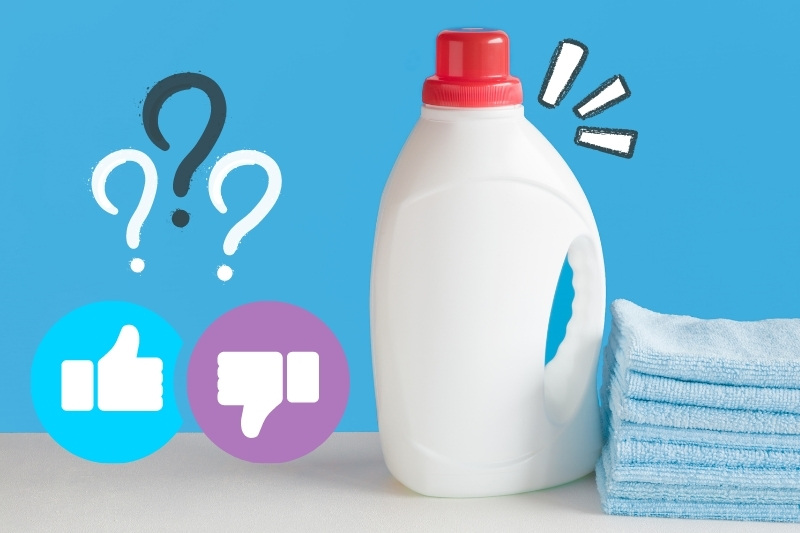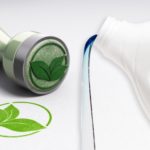Using fabric softener is a habit that most people got into as soon as they started doing their own washing. However, just because it is a habit and something that most people will do, it doesn’t mean that it isn’t free from controversy.
Over recent years, concerns have started to come to the surface that actually fabric softeners aren’t good for either people or their clothes. If you are wondering if your fabric softener is bad for you or your clothes, this article is for you.
How Fabric Softener Works
Fabric softeners became popular around five decades ago when laundry detergent left clothing rough and statically charged after washing. Fabric softeners give clothing a smooth, chemical coating that prevents static and makes clothes feel softer against the skin.
This same coating can help reduce wear and tear whilst clothing is washed and dried, and can reduce wrinkles to speed up ironing too.
Fragrances Can Be Bad for You
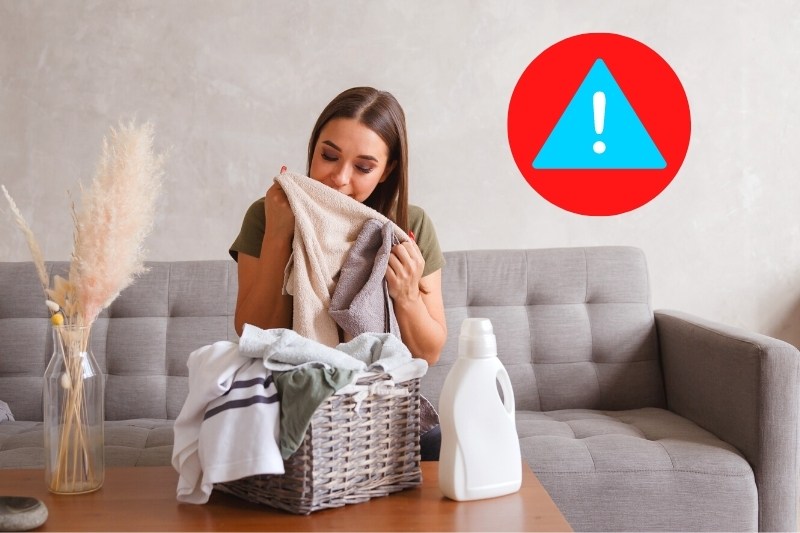
The scent that fabric softeners leave behind on clothing is one of the reasons that so many people opt to use it. As you move around, fabric softeners tend to release fragrance into the air, helping your clothes smell fresher for longer.
However, the chemicals that are in these fragrances can cause problems for some people. Many traditional fabric softener brands have used phthalates to disperse the scent and synthetic musks like galaxolide, though there are now a wide variety of fabric softeners available that do not contain these.
The mixture of chemicals that makes up the fragrance in a fabric softener can cause allergic reactions, skin irritations, and even difficulty breathing in some individuals. If you or your family have skin sensitivities, asthma, or are sensitive to certain chemicals, always do your research before swapping to a new fabric softener.
Preservatives and Colours Can Trigger Allergies
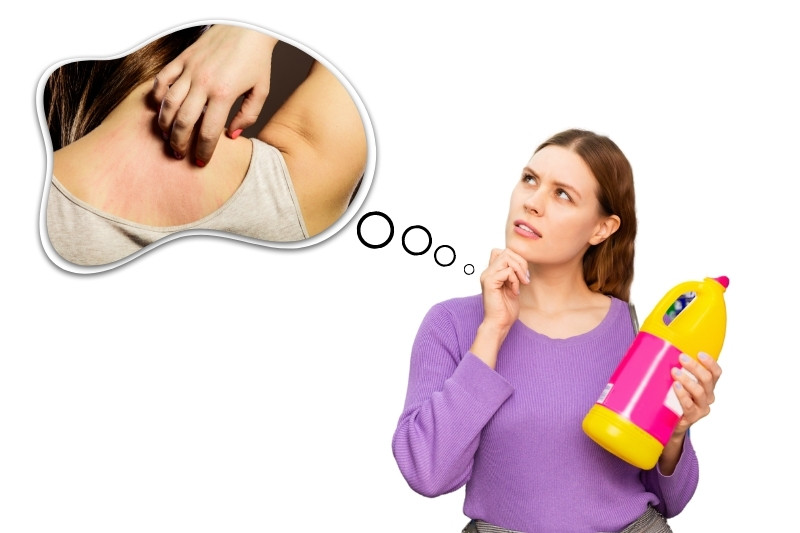
For many household chemicals, “preservatives”, “colours”, and “colourants” can all refer to a variety of different chemicals. The preservatives are designed to keep your clothes fresh and maintain their colour, however some of these preservatives can cause allergies and are even toxic to marine life.
In the same way, some artificial colourants can cause serious skin complaints or trigger asthma.
Build-Up Can Damage Clothes
The fact that fabric softener creates a waxy chemical film over clothing can result in a build-up. Whilst the build-up won’t damage the fabric itself, it can cause other issues, such as yellowing.
It can also reduce the absorbency of fabric, and make garments more flammable. In addition to making clothing more flammable, the fact fabric softeners can make clothing less absorbent can trap odours and stains, making the garments more difficult to properly clean.
Not only can these waxy chemicals negatively affect the garments themselves, but it can also clog up your pores, leading to spots and skin irritations.
When in Doubt, Check the Label

Of course, just because some fabric softeners contain these chemicals that can cause issues, that doesn’t mean that all fabric softeners have this issue. If you are looking for a new fabric softener, always check the label to find out what ingredients the softener uses.
There are a range of fabric softeners available on the market, including options that contain only natural, gentle ingredients.
Alternatives to Fabric Softener
Despite the potential for skin complaints and damage to clothing, fabric softener can make some clothes more comfortable to wear. If you want to use something to make your clothing softer, make ironing easier and drying faster, there are a variety of alternatives to chemical fabric softeners that you could try.
1. Bicarbonate of soda
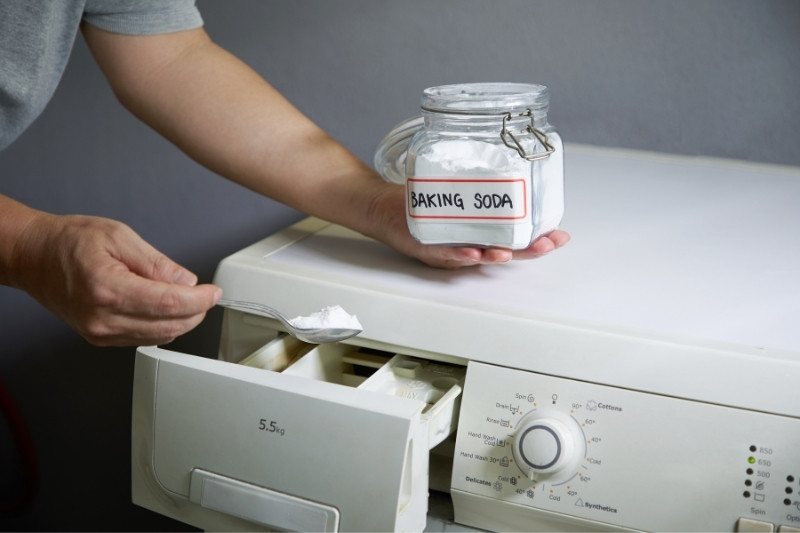
In addition to helping cakes rise, bicarbonate of soda can give you softer clothing, especially if you live in a hard water area and find your clothes come out of the washing machine stiff.
Simply add half a cup of bicarbonate of soda to the detergent drawer or directly into the drum before running the cycle as normal.
2. DIY dryer balls
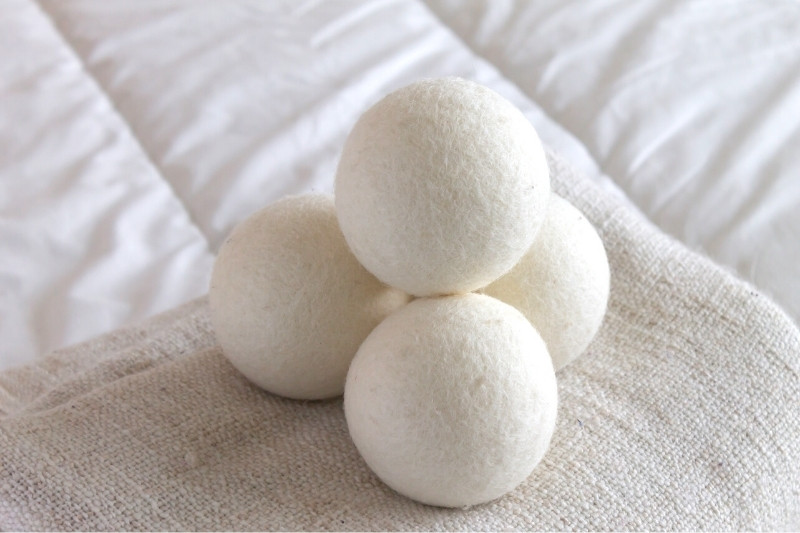
A dryer ball might not add a fragrance to your clothing, but it can help to reduce static and soften your garments. Rather than buying one, you can easily make your own with 100% wool yarn.
These directions will make you six dryer balls. You will need 3 skeins of non-washable 100% wool yarn, each of around 210 yards (190 metres) each. You will also need a needle with a large eye.
First, wrap the yarn around two fingers ten times. Take the yarn off your fingers, and wrap more yarn around the centre of the existing yarn ten times.
Keep wrapping more wool around the yarn knot, alternating directions, until you have created a ball around the size of a tennis ball. It might not be a perfect ball, but it doesn’t matter!
Cut the wool, leaving yourself a tail. Thread the tail through a few threads on the outside of the ball using the needle, then pull the wool the entire way through the yarn ball. Trim the end of the tail that is still sticking out.
Before using them in the dryer, you need to “felt” them. Put the balls in a pair of tights, and wash and dry them three times.
Once washed, the dryer balls are ready to use. Add all six into the tumble dryer with your clothing to leave your garments soft and static-free.
3. Distilled white vinegar

Distilled white vinegar is one of those kitchen miracles that can tackle a variety of jobs. Add half a cup of vinegar to the fabric softener dispenser before starting the cycle. Add a few drops of your favourite essential oil for a pleasant smell, then wash your clothing as normal.
If you like, you can even spray clothing with distilled white vinegar before putting them in the tumble dryer to tackle static and stiffness.
Make sure that you use distilled white vinegar. This type of vinegar has the most subtle smell that is unlikely to cling to your laundry after the cycle.
4. Tennis ball

Like dryer balls, a tennis ball can help agitate clothing during the drying cycle to reduce static and make clothing softer. Only use this tip on low temperatures to protect the tennis ball from the heat.
5. DIY fabric softener

You can also make your own fabric softener with just three ingredients.
Put two cups of Epsom salts in a jar or container, and add in half a cup of bicarbonate of soda. Add about 40 drops of your favourite essential oil, and mix everything together well.
When you run a washing cycle, add two or three tablespoons of the mixture to the detergent drawer before running your cycle as normal.

Lover of coffee, painting, and all things cute and fluffy. I’m always on the lookout for easier, more gentle ways to tackle awful household chores.
